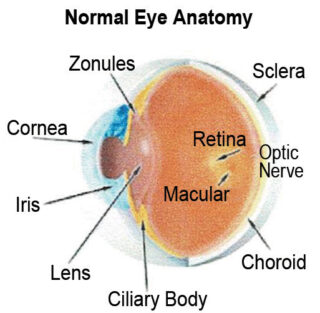
NewView Laser Eye, Inc.
12110 Sunset Hills Road
Suite 50
Reston, VA 20190
NewView Laser Eye, Inc.
20 Davis Ave SW
Leesburg, VA 20175

More Vision & Eye Care Articles
Cataract Implants Seeing In Three Dimensions

Approximately 20.5 million Americans age 40 and older have cataracts. The opportunity for freedom from reading glasses and bifocals was not available in intraocular lens implants. There are currently two of these advanced lenses that have become popular. Clareon PanOptix & Vivity by Alcon. They are known as “multifocal lenses” meaning they allow quality vision at near distance and intermediate zones through a series of focusing rings.
Our lives have become more complex and our vision is oftentimes tested throughout an average day of work. We have to read materials at close range, look at a computer in the intermediate range and perform tasks such as driving, requiring good distance vision. During the course of a day we have to constantly refocus our eyes in order to see multiple distances. Those of us who are over 40 have noticed that our reading vision has changed for the worse. Many of us require reading glasses because we no longer have the functional ability to focus on near objects like we did when we were younger.
The ability to change focus rapidly and focus on near objects is called accommodation and this process declines with age. In addition to this, the natural lens within our eyes starts to become cloudy with age.
What Is a Cataract?
Cataracts are, in fact, the clouding of the eye’s clear lens, like a window that is “fogged” with steam. When the lens becomes cloudy, light rays can not pass through it easily and vision becomes blurry. Cataracts are not a growth or a film over the eye.
Cataracts start out small and have little effect on vision at first, but they continue to grow slowly. As the cataract grows, so does the impact on vision. The most common signs of cataract development are:
- Painless blurring of vision
- Sensitivity to light and glare
- Double vision in one eye
- Poor night vision
- Fading or yellowing of colors
- Frequent changes in glasses or contact lens prescriptions
Although cataracts usually develop as part of the aging process (more than half of all Americans develop cataracts by age 80), they can also result from:
- Eye injuries
- Certain diseases, such as diabetes
- Genetic inheritance
- Certain medications
- Frequent, unprotected exposure to UV-A and UV-B rays
- What Is the Lens?
The lens is the part of the eye that helps focus light on the retina. The retina is the eye’s light-sensitive layer that sends visual signals to the brain. In a normal eye, light passes through the lens and gets focused on the retina. To help produce a sharp image, the lens must remain clear.
How Is a Cataract Treated?
For an early cataract, vision may improve by using different eyeglasses, magnifying lenses, or stronger lighting. If these measures don’t help, surgery is the only effective treatment. This treatment involves removing the cloudy lens and replacing it with a substitute lens, also known as an implant.
A cataract needs to be removed only when vision loss interferes with your everyday activities, such as driving, reading, or watching TV. You and your eye surgeons can make that decision together.
How Is a Cataract Removed?
Cataracts are removed with surgery, performed in an outpatient surgical center. In most cataract surgeries your native lens is replaced by an intraocular lens (IOL). The traditional method of replacing your native lens is with an IOL, aimed for good distance vision only. These are known as “monofocal lenses”. You would oftentimes still need reading glasses with monofocal lenses. One way to decrease your need for reading glasses would be to have one eye corrected for distance and one for near. This is called monovision. Depth perception can sometimes be affected by this option.
That is why the new IOL technology is so exciting. Each of the approved IOLs has its advantages and disadvantages. Your eye surgeon will review the risks, benefits and alternatives of multifocal implants with you in order to choose the best lens for you. Cataract surgery is covered by most insurance plans, however, the newer IOL implants are generally not covered and require additional out-of-pocket expenses besides the usual co-pay, co-insurance, or deductibles you would normally be responsible for. While this is unfortunate financially, the IOLs themselves are certainly worth the extra expenditures in appropriate patients. Your surgeon will determine if you are a good candidate for these new implants.
Other Articles You May Find of Interest...
- Dry Eye Relief Is In Sight With Optilight
- iDesign Advanced WaveScan Studio
- Norcross Vision Innovators: Glaucoma and Cataract Solutions
- Exploring the Benefits Of Intense Pulsed Light (IPL) For Ocular Surface Health
- Lose Years Off Your Face In Just One Hour
- How to Find a Great Online Shop Offering Same Day Glasses Shipping: Your Quick Guide
- March Is Workplace Eye Wellness Month

















